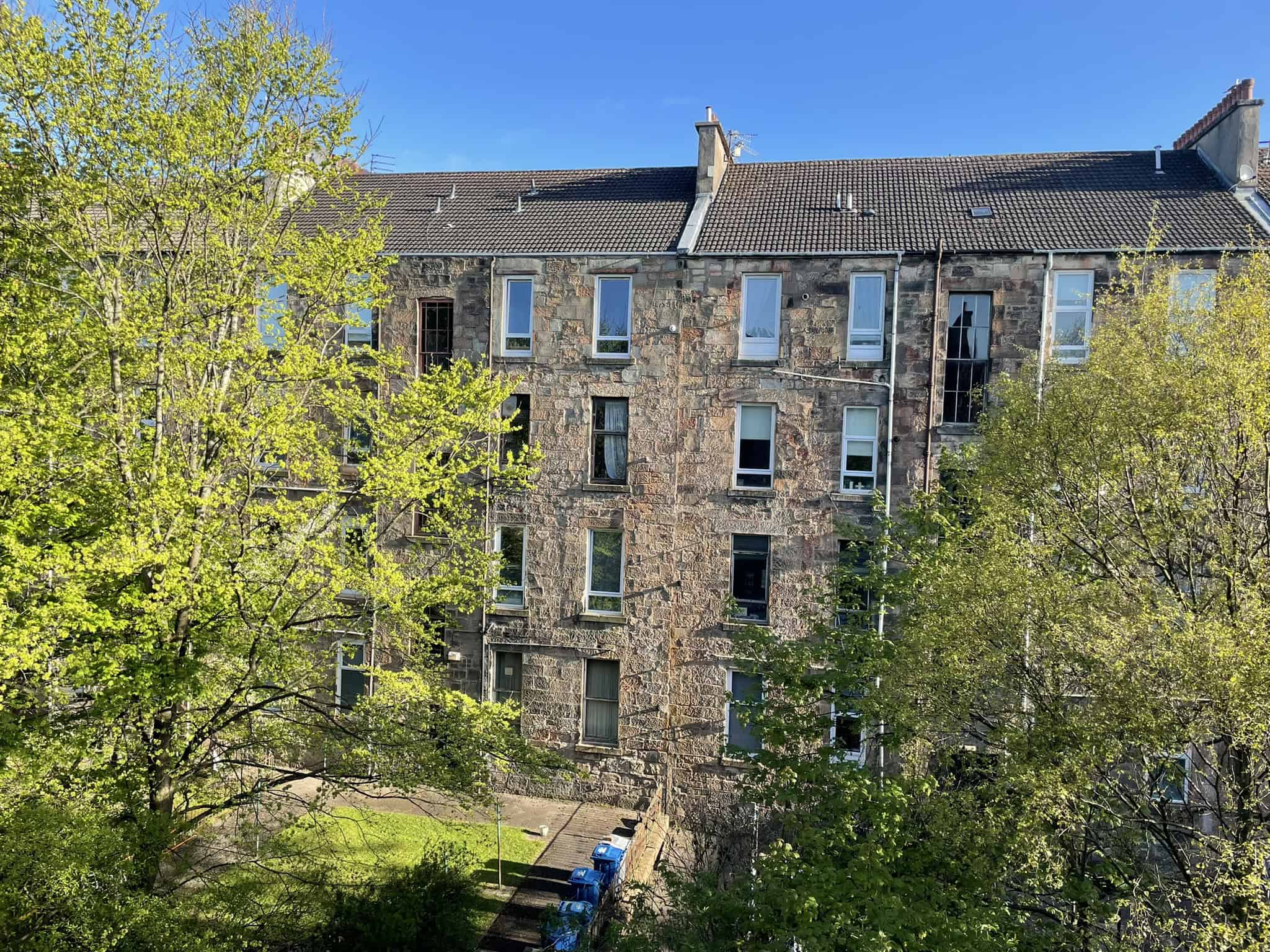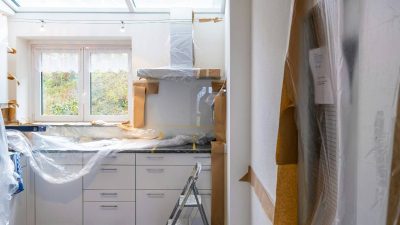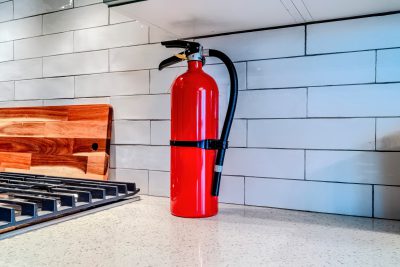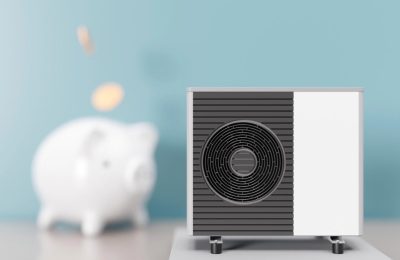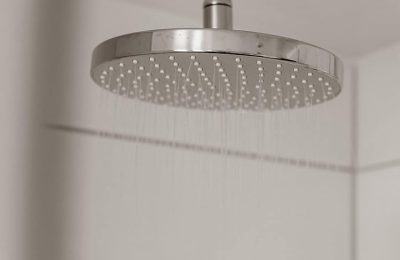As the weather begins to warm up, it’s the perfect time of year to give your tenement building a thorough spring clean. Follow this guide to learn what to look out for this spring to ensure your tenement stays warm, dry, safe, and in good working order.
Checking the common close and stair lighting
As part of this spring-clean checklist, take a closer look at the key components and address necessary repairs and structural issues in the close and common stair, including repairs and maintenance to the walls, floors, stairs, handrails, and doors.
The walls of the close are typically thinner and built on lighter foundations compared to external walls. Keep an eye out for and take pictures of any cracks in the close. Cracks can appear for a multitude of reasons, especially in older buildings. If you notice cracks in the close and think they might be serious, consult with a structural engineer to assess their severity and determine appropriate repair measures.
The close floor, subjected to heavy traffic, is likely to face wear and tear over time. Look out for hollow-sounding floors, which might indicate leaking pipes or a problem with drainage, and check for trip hazards, such as worn stone floor slabs or loose tiles.
As part of checks to the close, inspect the condition of the stair treads and handrails for signs of excessive wear or instability. Also, note the condition of the landing and if any of the steps are sloping. Sloping steps may be a sign of structural issues and will require seeking advice from a structural engineer to assess the problem.
Ensure both the front and back close doors are secure and the lock mechanisms are working properly. If you have any glass in the common doors, check that it is not cracked and comprises of toughened or safety glass to ensure security in your building.
Lastly, check the lighting in the communal areas, typically billed using a separately metered landlord’s supply. If you have a factor, they may co-ordinate billing for the energy used. In self-factored buildings, you will need to make your own billing arrangements or may be able to receive this service from your local authority. Search for ‘stair lighting’ or ‘communal lighting’ on their websites to find out if they offer this.
Repairs and maintenance to the common close are likely to be a common responsibility among the owners in your building. But check your titles to see if they specify who is responsible. If your titles are silent on this issue, follow the default rules in the Tenements (Scotland) Act 2004, which state that the close and stairs are owned in common and thus a common responsibility among owners.
Window maintenance
As it gradually becomes warm enough to have the windows open, this presents an ideal opportunity to inspect the ones in your property, including those in the close, and carry out essential preventative maintenance. This will help save money in the long run and maintain your property’s value.
Timber and metal windows should be repainted every five years, or less if they are especially exposed to harsh weather. Unprotected sills or bottom rails can result in decay and water ingress, so regular repainting can ensure windows remain structurally sound and look well-kept. Whilst repainting, examine the mastic around the windows for any gaps. Replacing deteriorated mastic ensures windows stay watertight.
If your building has sash and case windows, consider fitting a ‘simplex’ system which can be opened inwards. This facilitates easier cleaning of both the upper and lower sashes.
If you decide your windows need replacing, it’s important to consider your options thoroughly. For traditional tenement buildings with sash and case windows, consulting a sash window repair specialist is highly advisable as they can recommend potential repair options before resorting to replacement.
Additionally, obtaining planning consent may be necessary for window replacements, especially in listed buildings or conservation areas, so it’s vital to check with your local planning department before going ahead.
All owners have a legal duty to maintain their property’s windows to ensure the building stays watertight. Window repairs are generally an individual responsibility, including repairs and maintenance of window frames, moving parts, and the mastic that seals frames into the wall. The surrounding building elements, such as the stone or brick walls, are generally a common responsibility, but check your property titles to see what applies to your building.
As part of common close and window checks, also assess the condition of windows in the close. Ensure they can be opened to allow ventilation, or that the close has another form of adequate ventilation to prevent condensation and dampness. Repairs to close windows are typically a shared responsibility among owners but, as always, check your titles to determine who is responsible.
The communal outdoor area
As part of this spring checklist, make sure to include an inspection of the outdoor area. As the possibility of spending time outdoors increases, it’s a good idea to ensure this space is ready to use.
Most people who live in a tenement block have access to a back communal outdoor area, such as a garden or courtyard. But those living in main door flats – flats accessed from outside rather than via a communal stairwell – may have access to a front garden instead. Refer to the property section of your titles to confirm access rights and determine who is responsible for the outdoor areas in your building.
If maintaining the back outdoor area is a shared responsibility, it’s important to collaborate with your co-owners to determine how responsibilities will be divided. You may wish to rotate duties and divide tasks, or one owner may be happy to take on the responsibility. Alternatively, if you have a factor, they may include outdoor maintenance as part of their services.
Ensure outdoor areas are free from large items like sofas or mattresses, as these will not be collected by general refuse collectors. Arrange for council or private collection to remove such items. In the event of issues like dog fouling or accumulation of waste posing health hazards, promptly contact the Environmental Health team at your local council.
When taking care of the outdoor area, and the other common parts of your building, like the close and stairs, having an owners’ association can make addressing issues a smoother process, foster better communication, and improve decision-making. Consider setting one up as part of your spring clean to ensure your building can be effectively managed and maintained. To learn more about owners’ associations, check out this article.
